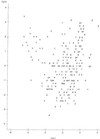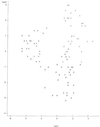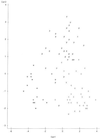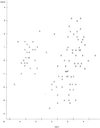Identification of fecal Escherichia coli from humans and animals by ribotyping
- PMID: 11282597
- PMCID: PMC92761
- DOI: 10.1128/AEM.67.4.1503-1507.2001
Identification of fecal Escherichia coli from humans and animals by ribotyping
Abstract
Fecal pollution of water resources is an environmental problem of increasing importance. Identification of individual host sources of fecal Escherichia coli, such as humans, pets, production animals, and wild animals, is prerequisite to formulation of remediation plans. Ribotyping has been used to distinguish fecal E. coli of human origin from pooled fecal E. coli isolates of nonhuman origin. We have extended application of this technique to distinguishing fecal E. coli ribotype patterns from human and seven individual nonhuman hosts. Classification accuracy was best when the analysis was limited to three host sources. Application of this technique to identification of host sources of fecal coliforms in water could assist in formulation of pollution reduction plans.
Figures




References
-
- American Public Health Association. Standard methods for the examination of water and wastewater. 19th ed. Washington, D.C.: American Public Health Association; 1995.
-
- Geldreich E E, Kenner B A. Concepts of fecal streptococci in stream pollution. J Water Pollut Control Fed. 1969;41:R336–R352. - PubMed
Publication types
MeSH terms
Substances
LinkOut - more resources
Full Text Sources
Medical

